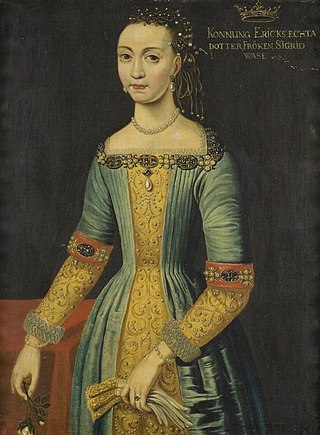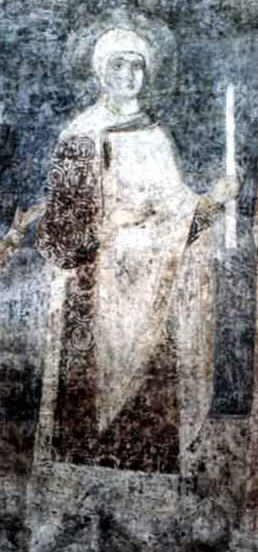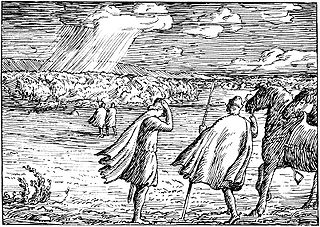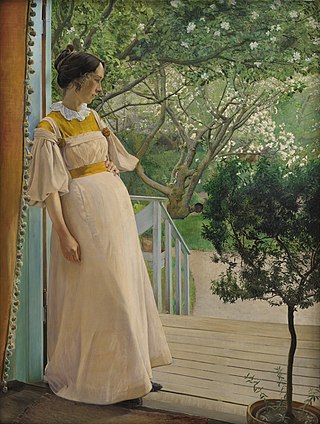Sources
- Dansk Biografisk Leksikon, København: J.H. Schultz Forlag 1932–44.
| Sigrid Svendsdatter | |
|---|---|
| Died | After 1066 |
| Spouse | Gottschalk |
| Issue | Henry Gottskalksøn |
| House | Estridsen |
| Father | Sweyn II of Denmark |
Sigrid Svendsdatter (died after 1066) was a Danish princess, the illegitimate daughter of King Sweyn II of Denmark.
She married Obotrite Prince Gottschalk (died 1066), who was in service of Canute the Great since 1029, and who was assisted by her father in regaining his father's principality. It is likely that they married in connection to this. She became the mother of Henrik Gottskalksøn. In 1066, her spouse was deposed in a rebellion. Sigrid and her female servants were captured in Mecklenburg, after which she was, according to traditional reports, "whipped" out of the country. Her life after 1066 is not documented. In 1100, she was surely dead, as her son laid claim to her inherited lands in Denmark.

Sigrid Undset was a Danish-born Norwegian novelist. She was awarded the Nobel Prize for Literature in 1928.

Sweyn Forkbeard was King of Denmark from 986 until his death, King of England for five weeks from December 1013 until his death, and King of Norway from 999/1000 until 1013/14. He was the father of King Harald II of Denmark, King Cnut the Great, and Queen Estrid Svendsdatter.

Eric the Victorious was a Swedish monarch as of around 970. Although there were earlier Swedish kings, he is the first Swedish king in a consecutive regnal succession, who is attested in sources independent of each other, and consequently Sweden's list of rulers usually begins with him. His son Olof Skötkonung, however, is considered the first ruler documented to definitely have been accepted both by the original Swedes around Lake Mälaren and by the Geats around Lake Vättern. Adam of Bremen reports a king named Emund Eriksson before Eric, but it is not known whether he was Eric's father. The Norse sagas' accounts of a Björn Eriksson are considered unreliable.

Sigrid the Haughty, also known as Sigrid Storråda (Swedish), is a Scandinavian queen appearing in Norse sagas. Sigrid is named in several late and sometimes contradictory Icelandic sagas composed generations after the events they describe, but there is no reliable historical evidence correlating to her story as they describe her. She is reported by Heimskringla to have been wife of Eric the Victorious of Sweden, sought as wife by Olaf Tryggvasson, then married to Sweyn Forkbeard of Denmark, but elsewhere author Snorri Sturluson says that Sweyn was married to a different woman.

Edith of Wessex was Queen of England through her marriage to Edward the Confessor from 1045 until Edward's death in 1066. Unlike most English queens in the 10th and 11th centuries, she was crowned. The principal source on her life is a work she herself commissioned, the Vita Ædwardi Regis or the Life of King Edward who rests at Westminster, which is inevitably biased.

Sigrid Gurie was a Norwegian-American actress from the late 1930s to early 1940s.
Świętosława was a Polish princess, the daughter of Mieszko I of Poland and sister of Bolesław I of Poland, who married two Scandinavian kings. According to some chroniclers, this princess, whose name is not given, was married first to Eric the Victorious of Sweden and then to Sweyn Forkbeard of Denmark, giving the former a son, Olof, and the latter two sons, Harald and Cnut. Because a documented sister of Cnut seems to have borne the Polish name Świętosława, it has been speculated that this may also have been the name of their mother, the Polish princess of the chroniclers.
Christina of Denmark, was Queen of Sweden as the wife of King Eric "IX", and the mother of King Canute I of Sweden.

Åsta Gudbrandsdatter was the mother of two Norwegian kings, King Olaf II of Norway and King Harald III of Norway. The primary source for the life of Åsta is Snorri Sturluson's saga Heimskringla, a 13th-century collection of tales about the lives of the Norwegian kings. In the chronicle, Åsta is described as "generous and high-minded" and as a keen political player and guiding influence on her royal husbands and children. Her parents were Gudbrand Kula and Ulfhild.

The Danish Poet is a 2006 animated short film written, directed, and animated by Torill Kove and narrated by Liv Ullmann. A co-production of the National Film Board of Canada (NFB) and Mikrofilm AS of Norway, it has won both the Academy Award and Genie Award for best animated short film.

Sigrid Eriksdotter of Sweden was a Swedish princess, the legitimized daughter of King Eric XIV of Sweden and of his lover, later spouse and queen, Karin Månsdotter.
Gunhilda of Wenden was a Polish princess, daughter of Mieszko I of Poland according to Chronicles of Thietmar of Merserburg, Adam von Bremen and Acta Cnutonis regis princess and Danish Viking Age queen consort, the supposed spouse of 10th-century King Sweyn I of Denmark. The sources about the wife or wives of Sweyn are contradictory, and historians have debated whether she is the Polish Świętosława given another name in Norse sources.

Estrid Svendsdatter of Denmark, was a Danish princess and titular queen, a Russian princess and, possibly, duchess of Normandy by marriage. She was the daughter of Sweyn Forkbeard and perhaps Gunhild of Wenden and half-sister of Cnut the Great. By Ulf Jarl, she was the mother of the later King Sweyn II Estridson and Beorn Estrithson. The dynasty that ruled Denmark in 1047–1412 was named after her. Though never a ruler or wife of a king, she was known in Denmark as queen during her son's reign.

Elisiv of Kiev was a Princess of Kiev and Queen Consort of King Harald III of Norway.
Sigrid Eskilsdotter (Banér), was a Swedish noble, the mother of the Swedish regent Christina Gyllenstierna and the maternal grandmother of King Gustav Vasa of Sweden.

The Danish House of Knýtlinga was a ruling royal house in Middle Age Scandinavia and England. Its most famous king was Cnut the Great, who gave his name to this dynasty. Other notable members were Cnut's father Sweyn Forkbeard, grandfather Harald Bluetooth, and sons Harthacnut, Harold Harefoot, and Svein Knutsson. It has also been called the House of Canute, the House of Denmark, the House of Gorm, or the Jelling dynasty.

Kálfr Árnason was an 11th-century Norwegian chieftain who played a major role both in defeating King Olaf Haraldsson at the Battle of Stiklestad and in bringing back his young son Magnus and raising him to the throne.

Sigrid Ida Matilda Kahle was a Swedish journalist and writer.
Sigrid Marie Elisabeth Neiiendam née Andersen (1868–1955) was a Danish actress who played some 200 parts at the Royal Danish Theatre in Copenhagen. She is remembered in particular for her interpretations of Ludvig Holberg's plays.

Sigrid Kähler, also Sigrid Andersen Ring, was a Danish ceramist and painter. Through her father, the ceramist Herman A. Kähler, she met the painter L. A. Ring. After their marriage in 1896, she inspired many of his works. Although she spent most of her time as a mother and housewife, she continued to paint occasionally and decorated ceramics. Her work together with that of her husband was exhibited in Ordrupgaard in 2017.